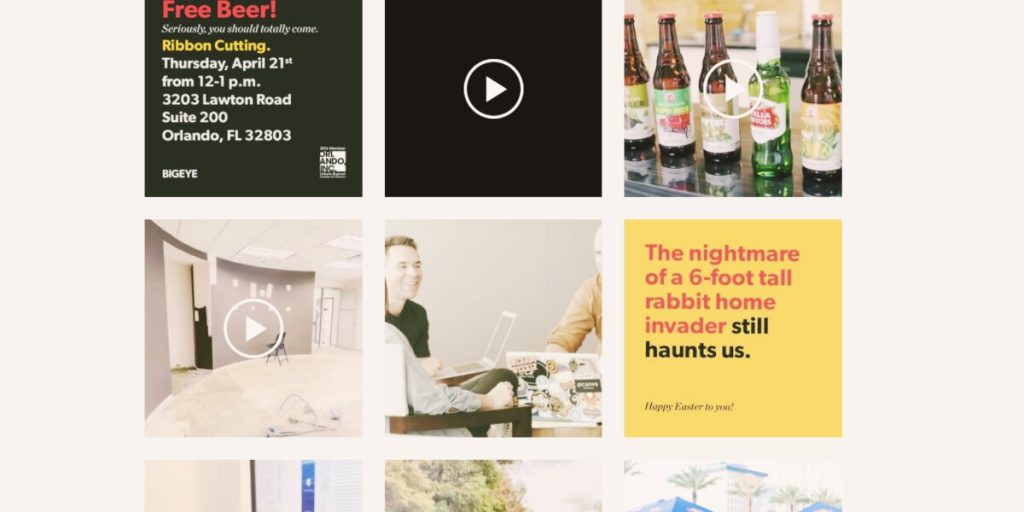
When Instagram first debuted, people flocked to the quick and easy, transactional photo sharing application. Unlike Facebook or Twitter, users’ photos were truly worth a thousand words. With no elaborate profiles or deeper agenda beyond documenting and sharing photos, Instagram was a class all its own. Pithy captions, profile links, and subtle calls to action have since become the norm; but the heart of Instagram has remained a personal photo sharing experience. One of the biggest differentiators for Instagram was that were no sponsored Instagram ads. Ever. At that time, 100% of all content was user generated.
Then in 2012, Facebook purchased Instagram (for a cool, one billion dollars). Although Facebook’s advertisement model has worked well and continues to be one of the most lucrative social platforms for advertisers, the social media giant realized they could not map the Facebook experience directly onto Instagram. Today, that may be changing. Here’s a brief history of sponsored Instagram ads, previous advertising strategies, and what’s on the horizon.
Why sponsored Instagram ads worked in the past:
When Instagram went live, their digital marketing strategy was somewhat unclear. But like many great ideas, it was only a matter of time before someone found a way to monetize this experience. Unlike Facebook, which only serves approximately 10% – 20% of all content to any given user, Instagram users see every piece of content that hits their feed. This presented a unique opportunity for marketers because users were used to seeing content that was completely relevant to their tastes.
To protect this experience, Facebook very carefully introduced sponsored Instagram ads into the mix and monitored everything from conceptualization to implementation for each and every sponsored Instagram advertisement. Brands (via their digital marketing agency) were able to subtly advertise products, destinations, and services by adding links to their photos and profiles without disrupting the social ecosystem because user engagement was so high.
They used a precise algorithm to serve highly personalized and targeted ads (that looked exactly like user content) to individuals who shared a variety of success indicators with a given brand. Facebook imposed strict guidelines on what sponsored Instagram ads could show, the type of verbiage that was appropriate, and how prospects were targeted. The results were phenomenal. Many users did not choose to opt out of ads (or even realize they were receiving ads) and began to engage with new brands in deeper and meaningful ways. Instagram and Facebook had cracked the future of digital marketing for every business and digital marketing agency in the world. Talk about a game changer.
How it will continue to work in the future:
But things are changing. Instagram is now taking their advertising techniques one step farther. They will soon use a new API to connect popular social media marketing agency platforms, such as Salesforce and Brand Networks, to their users’ Instagram feeds. This means that every digital marketing agency and content marketing agency will be able to create and serve their own content to the Instagram network. While this may seem like a pool of untapped potential for your advertising agency, it’s unclear how the Instagram user base will respond.
Instagram advertising will no longer be a highly-curated experience as agencies begin uploading (flooding) advertisements into their user feeds. Despite the risk, the rewards seem to outweigh any immediate concerns. Instagram will enjoy a more traditional pay-to-play advertising model while your social media marketing agency will now be able to move campaigns to market more quickly. Smaller companies that could not afford to participate in Instagram’s previous advertising model will now have an opportunity to get in on the action, and larger companies will receive even more advertising perks. It goes without saying what Instagram stands to gain … But just in case: the results, according to eMarkter forecasts, is an increase in ad revenue from $600 million to $2.8 billion by 2017.
What these changes mean for your business:
If you’re working with an advertising agency or content marketing agency, they have probably already begun thinking about how to leverage this new experience for your business. And if you don’t have an agency yet, now is a good time to get one. Instagram advertising is poised for success before the market becomes saturated with advertisements. Being an early entrant into the new Instagram advertising structure gives you a unique opportunity to participate in the system and reap the benefits before users grow tired of receiving ads.
It’s hard to say how long this current Instagram marketing trend will last (after all, users may become less engaged with the ads – or worse – less engaged with the platform entirely if their feeds are flooded with content that does not interest them). For now, however, Instagram still represents nothing but opportunity, so it’s a great time to get in on the action.
What it means for your customers:
As marketers, we’re naturally excited about this opportunity, but we also hope both Instagram and our advertising peers step up their game to ensure that all content that does go into the Insta-world still meets the same standards their user base has grown to love and expect. In many ways, Instagram is both the final frontier for strictly user-generated content (which we love!), and the first step toward right-for-me, highly-targeted, 100% customized content. The tipping point will be in the balance of how these ads are crafted and whether our desire to advertise wins out over our desire to engage our audiences.
We know, we’re getting deep (see above). But we genuinely look forward to seeing how this new API system fares and how customers embrace these changes. If we have anything to say in it, these changes reaffirm our commitment to superlative content marketing and highly-engaging campaigns that delight and surprise users at every stage in the customer journey.


